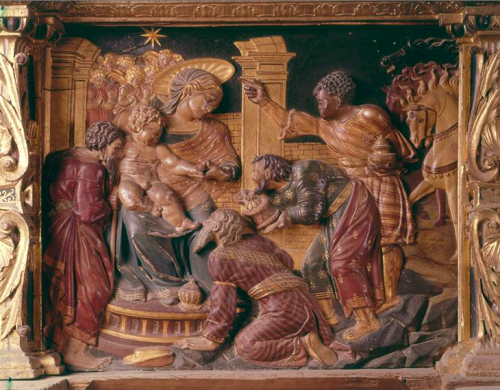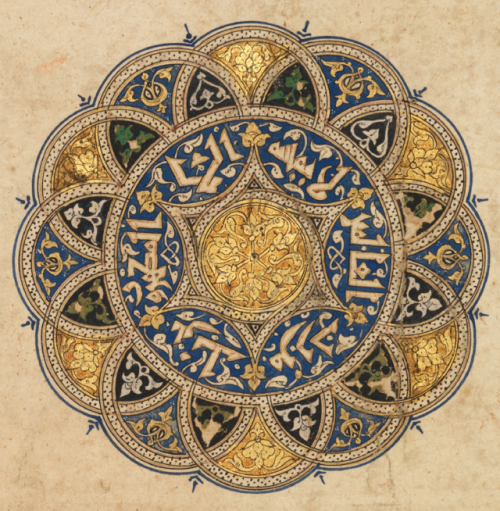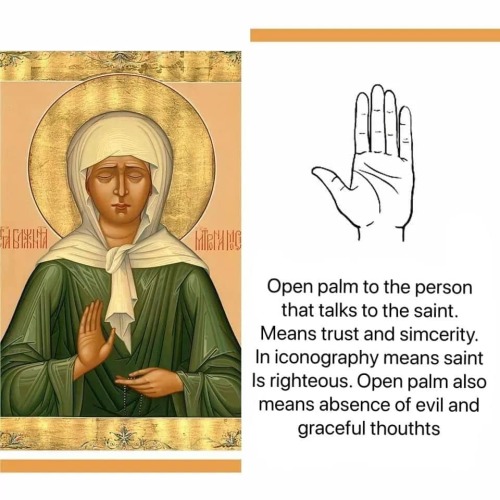Any Good Medieval Butterflies?
any good medieval butterflies?



I like these guys from Morgan Library MS M.358! this is also just a fun manuscript to look at because it is unfinished and you can see the artist's process making the borders by looking at the incomplete folios
More Posts from Babel2001 and Others
In the sixteenth century and for a long time afterwards, in short, the Middle Ages was never simply a chronological concept, never simply a past time firmly fixed in the past. It was an ideological state of being, a state of historical development that might return and in fact could be re-entered much more easily than it could be left behind. Sermons of the period repeatedly warn against precisely this possibility: John Jewel, bishop of Salisbury under Elizabeth, was one who preached vigilance against Catholics who might bring back darkness, concerned that those who “rauine and spoyle the house of God” and by means of whom “forraine power, of which this realme by the mercie of God is happely delyuered, shall agayne be brought in vpon vs,” and warning that “Suche thinges shalbe done vnto vs, as we before suffered: the truth of God shalbe taken away, the holy scriptures burnt and consumed in fire.” The overall mode here might be an admonitory subjunctive, but the simple future tenses rhetorically propose something that will happen.
Later, when interest in the medieval period was revived in the second half of the eighteenth century, the original threat of a Middle Ages that might return had greatly diminished. In the eighteenth century, as Linda Colley has argued, Great Britain was consolidating itself as a protestant nation and a British Empire was being founded in the 1760s on the gains made in the Seven Years War. If Britain still demonised Catholicism, it nevertheless did so without quite the same sense, as in Elizabethan England, that Catholicism was always set to pounce on an unwary nation. It was then possible for such ministers of the Church of England as Thomas Percy to revive interest in the Middle Ages without provoking fears of an immediate lapse into Catholic superstition. It was possible for people to construct around themselves renewed medieval spaces – as Horace Walpole did with his house at Strawberry Hill – without threatening the immediate return of the medieval repressed. Hence the foundations were laid for a more scholarly approach to the Middle Ages in the 1760s, the period known as the Medieval or Romantic revival.
The initial impulses of the revival grew out of antiquarianism. In the eighteenth century all kinds of antiquities became the focus of interest – neolithic and Iron Age remains, coins, ballads and early poetry, folklore – as part of a general turn to the primitive. There was then a discovery of the past, in some cases quite literally a dis-covering as artefacts were unearthed, manuscripts retrieved, old tombs broken open. Out of disparate antiquarian impulses arose, in the medievalist sphere, such classic works as Richard Hurd’s Letters on Chivalry and Romance (1762); Thomas Percy’s ballad collection, The Reliques of Ancient English Poetry (1765); Horace Walpole’s novel, The Castle of Otranto (1764), Thomas Tyrwhitt’s edition of Chaucer’s Canterbury Tales (1775), and the three-volume scholarly work by Thomas Warton, History of English Poetry (1774–81).
[...]
Even as artefacts were dug out of the ground, oral ballads transcribed, and manuscripts retrieved from oblivion, the condition of this so-called revival was that nothing would actually come back to life. The Medieval Revival, by transforming the Middle Ages into a new object of study, in fact revived nothing, but rather secured the period as part of the dead past. This was History. At least implicit in this antiquarianism was the underlying eighteenth-century sense of historical progress; nothing had ever reached such a state of improvement as it now enjoyed. Correspondingly, there was little threat that the past might return. Medieval studies, which grew out of the amateur efforts of Percy, Scott, and others, would eventually deliver the Middle Ages as a historical period, fixed in the past.
And yet, acceptable as an interest in the Middle Ages became in the course of the nineteenth century, a strange temporality, as I want to show here, has persisted in all eras in ideas of the Middle Ages. “Historical linearity,” Bettina Bildhauer and Anke Bernau write, “quickly proves an unsatisfactory model when seeking to understand contemporary investments in the medieval past.” And while they refer specifically to films about the Middle Ages, the remark is more generally true. We might think of the vision of a discontinuous history that results as a queer one. Carolyn Dinshaw, thinking in particular of mystical experience and Margery Kempe, writes: “in my view a history that reckons in the most expansive way possible with how people exist in time, with what it feels like to be a body in time, or in multiple times, or out of time, is a queer history – whatever else it might be.”
Matthews, David. “‘Welcome to the Current Middle Ages’: Asynchronous Medievalism.” In Medievalism: A Critical History. http://www.jstor.org/stable/10.7722/j.ctt6wpbdd.9
In what follows, however, I want to draw attention to a context where women had a role that was culturally and socially significant and where consequently some effort was made to police the relations that they formed with one another in terms that implicated the erotic. Anchorites were men or women who attempted to mimic the eremitic lifestyle of the desert fathers by dedicating themselves to a life of solitary confinement in a cell or “anchorhold,” usually under the spiritual direction of a bishop. While the reclusive life was adopted by individuals from the early Middle Ages until well into the sixteenth century, statistical surveys have shown that in England anchoritism reached its apogee in the thirteenth century and that, in this period, women adopting the lifestyle outnumbered men by a ratio of roughly four to one. Although, on the surface, the solitary nature of Journal of Medieval Religious Cultures the anchorite’s vocation seems to preclude the kinds of socially valued and politically potent relationships that characterize premodern discourses of male friendship, in England at least the centrality of anchorites to medieval communities is apparent. English anchoritism was a fundamentally social phenomenon, sustained by networks of patronage, material support, and verbal and textual interaction; the relationships forged among recluses, and with others beyond the confines of the cell, potentially possessed an importance beyond mere practical necessity. If, as Robert Hasenfratz has recently put it, “many anchorites withdrew from the world only to find themselves in the center of village life,” the anchorhold is best understood not simply as a space of physical isolation but also as a transactive site, a location within which bonds could be formed and networks sustained. Contemporary discourses of friendship may thus have exerted an influence on the lives of individuals who, on another level, remained dead to the world.
Robert Mills. “GENDER, SODOMY, FRIENDSHIP, AND THE MEDIEVAL ANCHORHOLD.” Journal of Medieval Religious Cultures 36, no. 1 (2010): 1–27. https://doi.org/10.5325/jmedirelicult.36.1.0001.
back in the day medieval times was so big it covered all of europe. now its so small it fits in some restaurants


loose sketches of some Pelagien outfits... travelling and sleeping
notes under readmore:
the travelling outfit is based on some c13th and 14th sources which describe large hoods and cloaks
i opted to not do a particularly priest-y look - he's not trying to draw attention while moving
i am so aware of the debate on whether medieval people slept naked. 95% of the sources of people doing this are either from warm climates (like portugal) or depict nobles with access to good bedding and servants to heat their chambers - other people would probably sleep in underwear or specific sleep clothes. i've opted for a c14th set of a mens short undertunic and braies
i am making wild extrapolations as to what a guy with a very specific set of experiences (ftm . clericus vagans . autistic . lower middle class in the 1300s) would wear . allow a guy some creative liberty


Juan de Balmaseda
Carved Predella: Adoration of the Magi
Spain (c. 1516-1525)
Polychrome Wood, 68 x 83 cm.
Palencia, Seo. Capilla de San Ildefonso.
The Image of the Black in Western Art Research Project and Photo Archive, W.E.B. Du Bois Institute for African and African American Research, Harvard University


Crivelli, Carlo. “St. George,” 1472. Metropolitan Museum of Art. New York.

Shamsa, 1338
Shamsa means ‘sun’ in Arabic and it is the term used to refer to illuminated roundels
Collection: Trustees of the Chester Beatty Library, Dublin



medieval parchment repairs
in a psalter, south-western germany, late 12th/early 13th c.
source: Hermetschwil, Benediktinerinnenkloster, Cod. membr. 37, fol. 19r, 53r, and 110r

St Michael by Carlo Crivelli, 1472
-
 alchemicallyxcadh liked this · 10 months ago
alchemicallyxcadh liked this · 10 months ago -
 little-clone-baby reblogged this · 10 months ago
little-clone-baby reblogged this · 10 months ago -
 bog-teeth liked this · 10 months ago
bog-teeth liked this · 10 months ago -
 umptious-bumptious reblogged this · 10 months ago
umptious-bumptious reblogged this · 10 months ago -
 dreamy-boogie reblogged this · 10 months ago
dreamy-boogie reblogged this · 10 months ago -
 dreamy-boogie liked this · 10 months ago
dreamy-boogie liked this · 10 months ago -
 dandelionjack liked this · 10 months ago
dandelionjack liked this · 10 months ago -
 akaanir-of-starfleet reblogged this · 10 months ago
akaanir-of-starfleet reblogged this · 10 months ago -
 catwholurks liked this · 10 months ago
catwholurks liked this · 10 months ago -
 aflowerfemme liked this · 10 months ago
aflowerfemme liked this · 10 months ago -
 alexa-santi-author liked this · 10 months ago
alexa-santi-author liked this · 10 months ago -
 legendaryjarcollection liked this · 10 months ago
legendaryjarcollection liked this · 10 months ago -
 mollisaurus reblogged this · 10 months ago
mollisaurus reblogged this · 10 months ago -
 not12001ants liked this · 10 months ago
not12001ants liked this · 10 months ago -
 armillaryspheres reblogged this · 10 months ago
armillaryspheres reblogged this · 10 months ago -
 aceofcrows1222 reblogged this · 10 months ago
aceofcrows1222 reblogged this · 10 months ago -
 aceofcrows1222 liked this · 10 months ago
aceofcrows1222 liked this · 10 months ago -
 cusstardcrush liked this · 10 months ago
cusstardcrush liked this · 10 months ago -
 goingsparebutwithprecision liked this · 10 months ago
goingsparebutwithprecision liked this · 10 months ago -
 supersciencegeek liked this · 10 months ago
supersciencegeek liked this · 10 months ago -
 prairiesbelow liked this · 10 months ago
prairiesbelow liked this · 10 months ago -
 babel2001 reblogged this · 10 months ago
babel2001 reblogged this · 10 months ago -
 pseudo-boyfriend reblogged this · 10 months ago
pseudo-boyfriend reblogged this · 10 months ago -
 good--merits-accumulated reblogged this · 10 months ago
good--merits-accumulated reblogged this · 10 months ago -
 ofrabjousnight liked this · 10 months ago
ofrabjousnight liked this · 10 months ago -
 skiesareblue liked this · 10 months ago
skiesareblue liked this · 10 months ago -
 mothematised liked this · 10 months ago
mothematised liked this · 10 months ago -
 theaologies liked this · 10 months ago
theaologies liked this · 10 months ago -
 tiger-manya liked this · 10 months ago
tiger-manya liked this · 10 months ago -
 nekomacbeth liked this · 10 months ago
nekomacbeth liked this · 10 months ago -
 unbreedable reblogged this · 10 months ago
unbreedable reblogged this · 10 months ago -
 starfishlikestoread reblogged this · 10 months ago
starfishlikestoread reblogged this · 10 months ago -
 the-rolling-libero liked this · 10 months ago
the-rolling-libero liked this · 10 months ago -
 finnlongman reblogged this · 10 months ago
finnlongman reblogged this · 10 months ago -
 fuckyeahsnackables liked this · 10 months ago
fuckyeahsnackables liked this · 10 months ago -
 blacklodgeluesah liked this · 10 months ago
blacklodgeluesah liked this · 10 months ago -
 awholeentireblog reblogged this · 10 months ago
awholeentireblog reblogged this · 10 months ago -
 awholeentireblog liked this · 10 months ago
awholeentireblog liked this · 10 months ago -
 rogaladin liked this · 10 months ago
rogaladin liked this · 10 months ago -
 werewolf-transgenderism reblogged this · 10 months ago
werewolf-transgenderism reblogged this · 10 months ago

what it says on the tin - a collection of bits and pieces i may want to refer back to. you're welcome to follow!
28 posts








